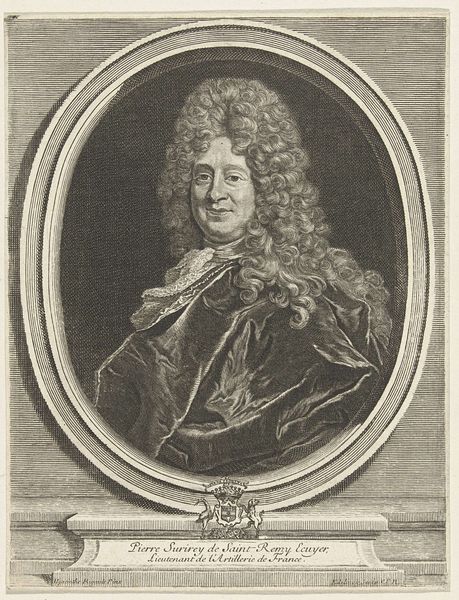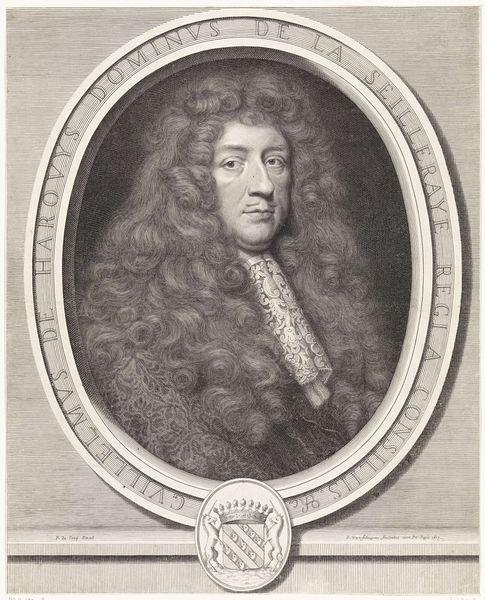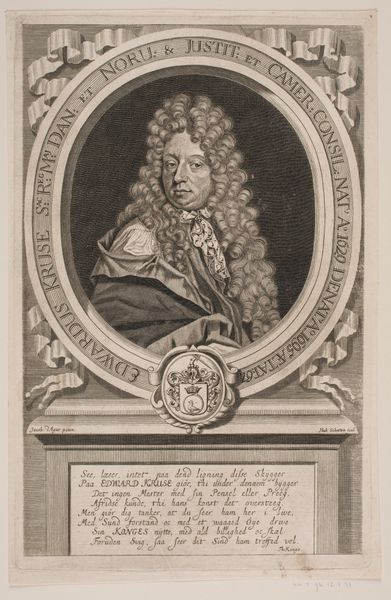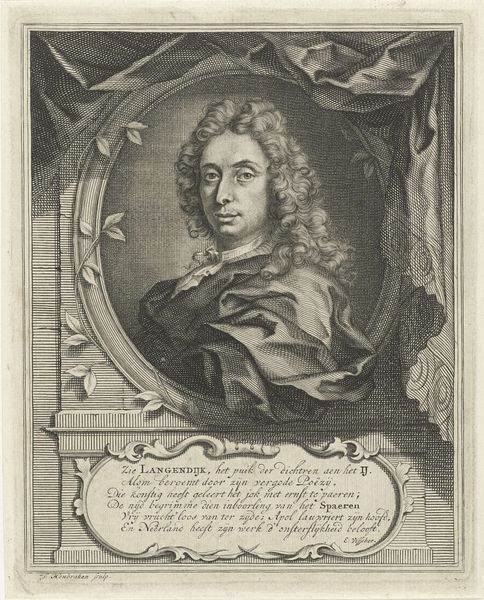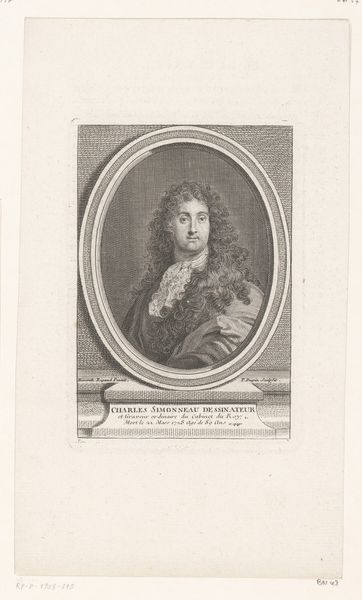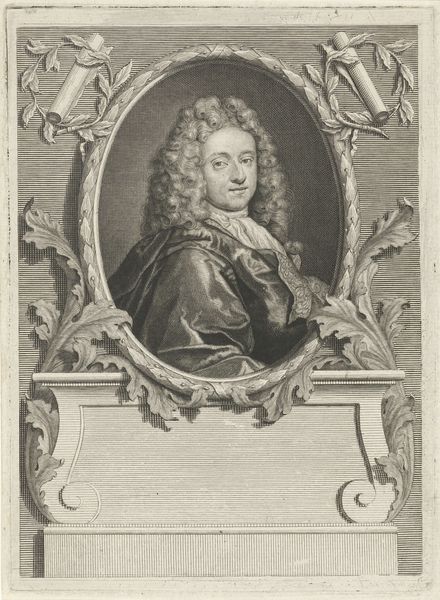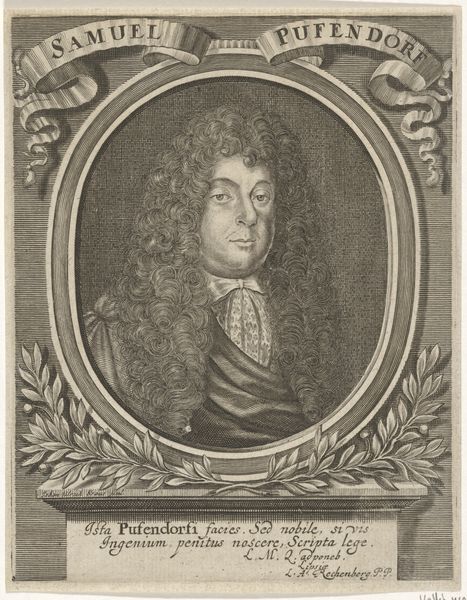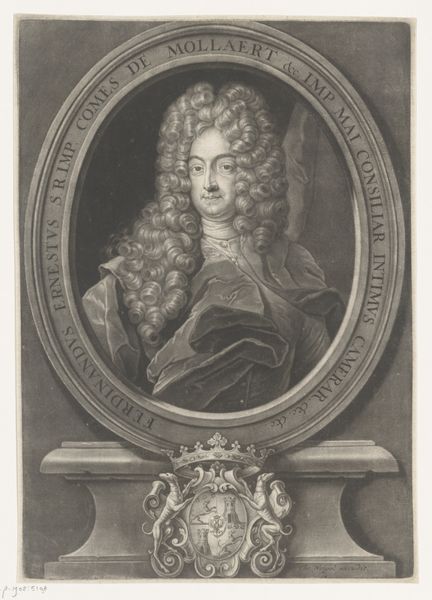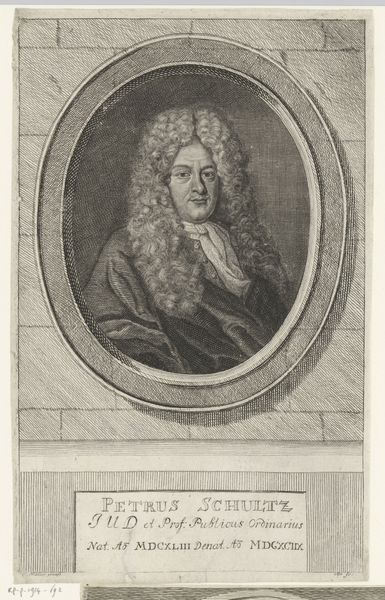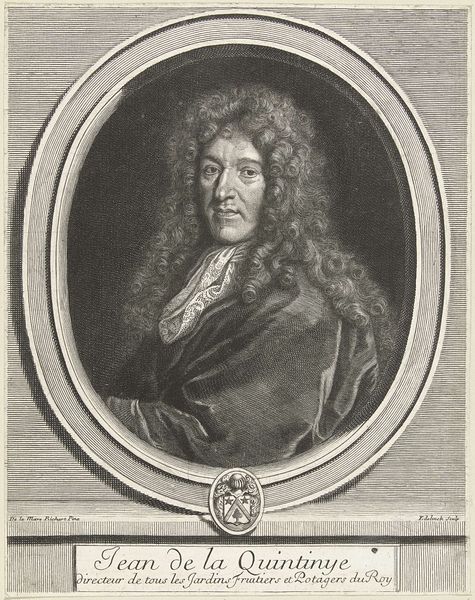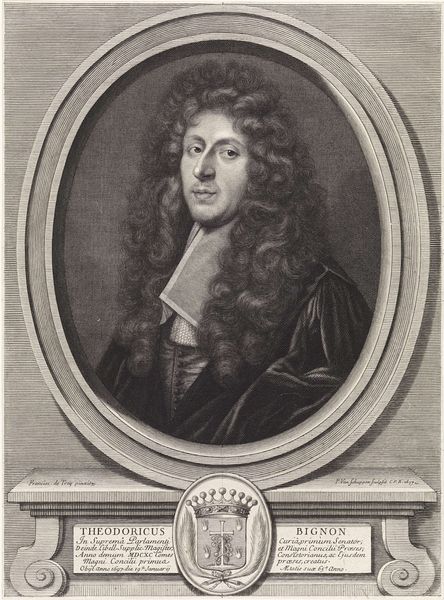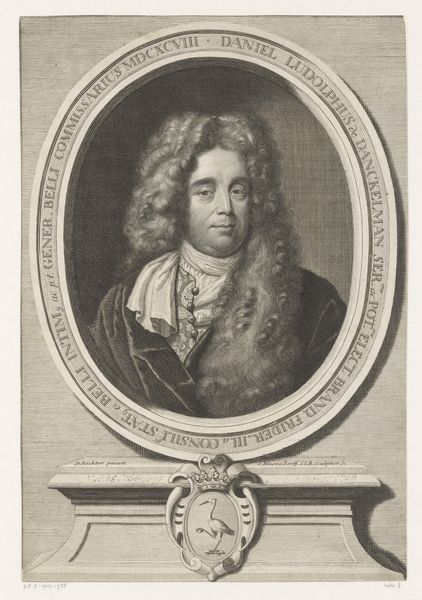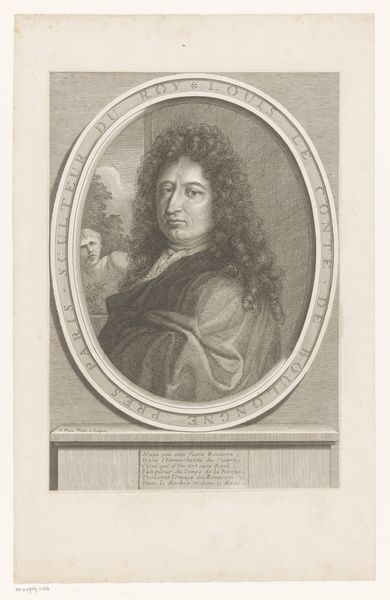
print, engraving
portrait
baroque
old engraving style
history-painting
engraving
Dimensions: height 139 mm, width 101 mm
Copyright: Rijks Museum: Open Domain
Curator: This engraving, created sometime between 1700 and 1751 by Pierre Dupin, offers us a glimpse into the visual culture of the Baroque era through a portrait of Charles Le Brun. Editor: It's strikingly formal, isn't it? The ornate oval frame, the elaborate wig... everything about it speaks of status and carefully constructed identity. It's quite captivating in its way, although almost theatrically posed. Curator: Absolutely. Le Brun was a dominant figure in French art during the reign of Louis XIV. This image, being a print, suggests wider dissemination of his image and therefore, his influence. Dupin’s choice of the Baroque style would resonate with viewers familiar with the grandeur of the French court. Editor: The wig is central here. More than mere fashion, the flowing locks communicate authority, power. We can also consider the frame itself – ovals suggest ideas of wholeness and completion. The depiction is meant to feel absolute, unimpeachable. Curator: Precisely! Think about Le Brun’s role as the king’s premier painter; these symbols are less personal and much more performative. It reinforces the hierarchies present at that time. The inscription itself, celebrating his birth and death, speaks to the intentional construction of a legacy. Editor: The image, while celebrating Le Brun, does much more. By including symbols of power, from his clothing to the intricate framing elements, it tells a broader cultural narrative, highlighting the enduring relevance of Baroque symbolism. Curator: Seeing it this way encourages us to remember not just the individual, but the visual language of the period – a language that consciously connects leadership with the ideals of art. Editor: Indeed, by unraveling these symbolic strands, the engraving encourages us to question the motivations behind carefully constructed images, even in the modern era.
Comments
No comments
Be the first to comment and join the conversation on the ultimate creative platform.
